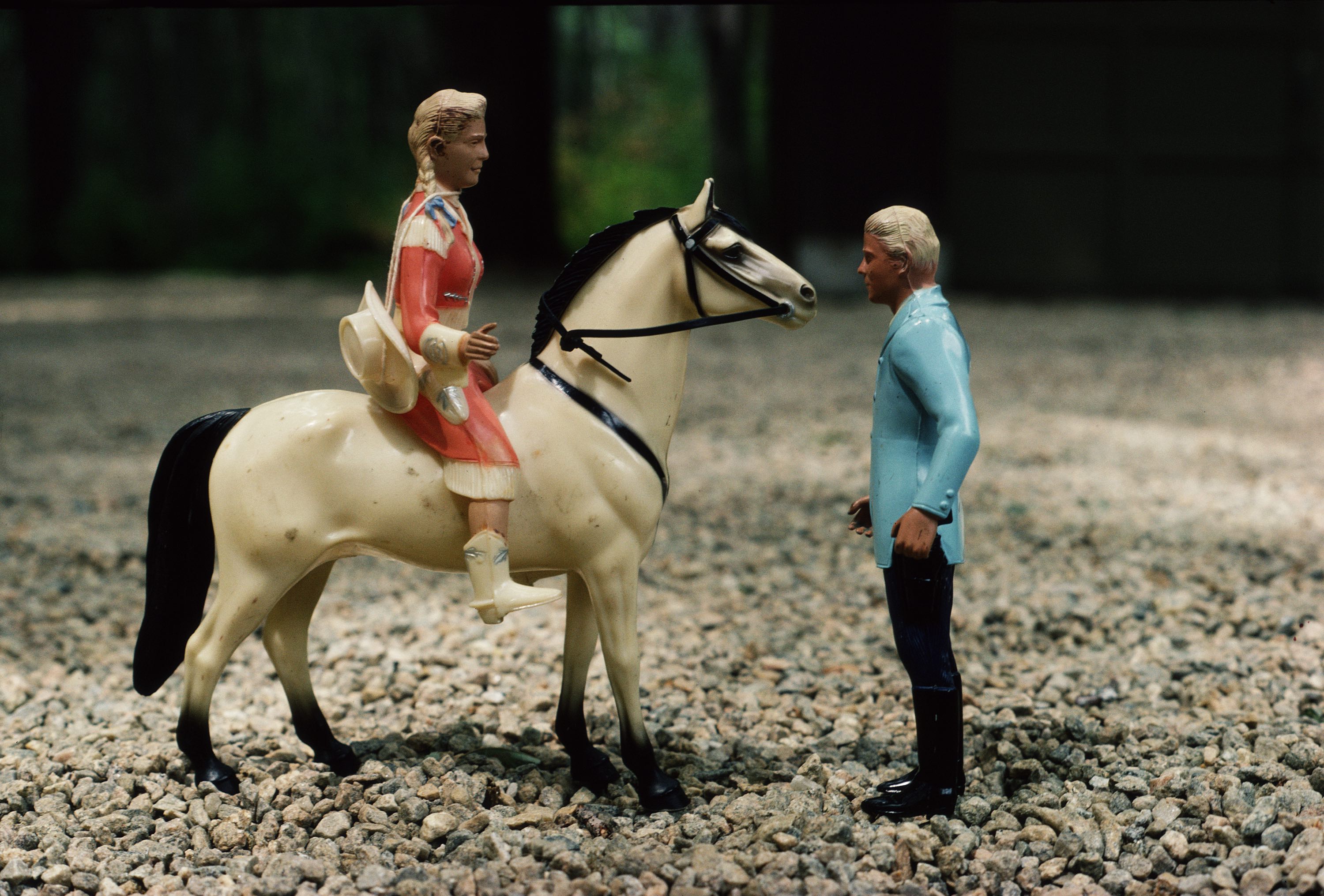The offbeat, fantasy world of Laurie Simmons
- Text by Miss Rosen
- Photography by Laurie Simmons

Have you ever wanted to step into a picture and live in that world? It’s a feeling American artist Laurie Simmons knows very well. “When I was a child, I had a strong desire to enter into the drawings in the storybook,” she says. “I can remember sitting on my mother’s lap and feeling this frustration. I wanted to get inside and walk around with the characters.”
As a member of The Pictures Generation (a group of American artists from the 70s who critically analysed the media), Simmons explores the subject of womanhood through enigmatic images that subvert stereotypes, forcing viewers to question their own assumptions.
40 years in the making, Laurie Simmons: Big Camera, Little Camera, is a major retrospective exhibition and book exploring the construction of gender, identity, reality, and illusion – as well as the photograph itself. Her work stages scenes that become poems, metaphors, and meditations on much larger ideas.

How We See/Ajak (Violet), 2014.

Brothers/Horizon, 1979.
“I never wanted to make a picture where there was a bloody knife on the floor or something that suggested a before and after,” Simmons says. “In that sense, I was influenced by early advertising because it felt like a snap, a thought, a perfume, an ether – something that just flickers by.”
“I never create to have a heavy-handed narrative. In fact, I reject that at every point I can. It was the notation of a moment that was coming from a bigger idea I had about politics, psychology, my personal life, big ideas that I could reduce down to an instant.”
Simmons adds that she never set out to be a photographer – the career chose her. “I had a traditional art school education. I was a painter, printmaker, sculptor, and it wasn’t until I came to New York that I understood how quickly I could get my ideas out if I used a camera.”

The Love Doll/Day 27/Day 1 (New in Box), 2010.

Long House (Orange and Green Lounge), 2004.
“I imagine if I was a young artist now I would not be drawn to photography because of the sheer volume of photographic images that we are bombarded with every day. But then, in the early-mid 1970s, I had a very profound feeling about photography. It was a way to record half-truths and fiction, and relay an artifice. I was excited about the immediacy of it.”
Playful, suggestive, tender, and innocent, Simmons’s photographs call up a feeling for days gone by, back to a time when things seemed so much simpler than they are now. Her work is analogue, preserving the nostalgic pleasures of film photography rather than relying on Photoshop to create an artificial world. In embracing dolls, dummies, and figurines, casting them in moments neither here nor there but somewhere in between, Simmons’s photographs invite us to tap into the powers of imagination that rule childhood.
“Maybe it’s not a surprise but I wasn’t a girl who played with dolls; I was much too peripatetic. I dismembered dolls and cut their hair off. My dollhouses were a mess,” she adds.
“But the imagery, the iconography, the way it imitated real life – I couldn’t let go of those kinds of disparities between miniature imitation life and real life were very appealing to me. I wanted to Honey I Shrunk the Kids myself right down into those spaces.”

Pushing Lipstick (Spotlight), 1979.

Some New: Grace (Orange), 2018.

Walking Microphone with Skirt, 1989

Walking Cake II (Color), 1989.

Country Road: Kentucky, 1984.

Café of the Inner Mind: Gold Café, 1994.
Laurie Simmons: Big Camera, Little Camera is on view at the Museum of Contemporary art Chicago through May 5, 2019.
Follow Miss Rosen on Twitter.
Enjoyed this article? Like Huck on Facebook or follow us on Twitter.
You might like

The Getty Center’s first exclusively queer exhibition opens today
$3 Bill: Evidence of Queer Lives — Running until September, it features paintings, ephemera, video and photography to highlight LGBTQ+ histories, culture and people from 1900 to the present day.
Written by: Isaac Muk

A new documentary explores Japan’s radical post-war photography and arts scene
Avant-Garde Pioneers — Focusing on the likes of Daidō Moriyama, Nobuyoshi Araki, Eikoh Hosoe and many more, the film highlights the swell of creativity in the ’60s, at a time of huge economic change coupled with cultural tensions.
Written by: Isaac Muk

From his skating past to sculpting present, Arran Gregory revels in the organic
Sensing Earth Space — Having risen to prominence as an affiliate of Wayward Gallery and Slam City Skates, the shredder turned artist creates unique, temporal pieces out of earthly materials. Dorrell Merritt caught up with him to find out more about his creative process.
Written by: Dorrell Merritt

Inside the world’s only inhabited art gallery
The MAAM Metropoliz — Since gaining official acceptance, a former salami factory turned art squat has become a fully-fledged museum. Its existence has provided secure housing to a community who would have struggled to find it otherwise.
Written by: Gaia Neiman

Gaza Biennale comes to London in ICA protest
Art and action — The global project, which presents the work of over 60 Palestinian artists, will be on view outside the art institution in protest of an exhibition funded by Bloomberg Philanthropies.
Written by: Cyna Mirzai

The White Pube: “Artists are skint, knackered and sharing the same 20 quid”
We caught up with the two art rebels to chat about their journey, playing the game that they hate, and why anarchism might be the solution to all of art’s (and the wider world’s) problems.
Written by: Isaac Muk

